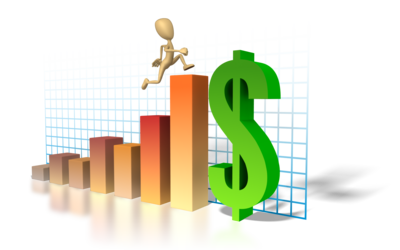Retirement Planning for
Self Employed Business Owners

Retirement planning for self employed people is really not all that different from planning for those who work for other people.
The fact is that both individuals need to be mentally, socially and financially prepared when the time comes to retire.
Plans for the Entrepreneur
You may not think of yourself as an entrepreneur, but if you work for yourself either full-time or part-time, that’s exactly what you are in reality.
You are in a special class of people willing to be dependent on themselves for income generation. You are probably a risk taker who believes in your abilities.
Taking risks can generate wealth, but in some areas of life the risks need to be carefully controlled. One of those areas is retirement.
You want to plan for your retirement so that when the time comes you are ready to retire without giving up your current lifestyle.
What this means is you have to look ahead to the amount of annual income you want during your retirement years in order to enjoy all the activities you have planned.
However retirement planning for self employed people does not have to be risky.
Retirement planning for self employed individuals requires a real financial discipline.
When you work for someone else, it’s easy to sign up for automatic paycheck deductions to go into a savings account or to enjoy the benefits of an employer paid retirement benefit.

Retirement planning for self employed secrets
When you work for yourself, you are the employer looking out for the employee which is YOU.
Of course, the sooner you start saving for retirement, the easier it will be to insure you are able to retire in the style you choose.
But the fact is that no matter what age you begin working for yourself, retirement planning should be one the items at the top of your list.
Otherwise, you could find yourself having to make significant changes in your lifestyle and not be able to do the things you have planned such as trips or hobbies.
More for Later
Retirement planning for self employed people has never been easier. With the number of self-employed people growing rapidly, the government still makes it easy for you to build up your RRSP.
The registered retirement savings plan (RSP) has advantages. Two major benefits to the RRSP is a worthwhile component to your financial plan.
First is the immediate tax savings which you gain from a contribution to the plan.
Contributions to a registered retirement savings plan. can be made during the year and within the first 60 days of the following year can be used as a deduction from your income when your tax refund is filed.
The other major benefit to contributing to a registered retirement plan is the tax-deferred savings.
What this means to you is the investment in your plan can earn income such as interests, dividends, or capital gains.

Does a TFSA help in Retirement Planning for Self Employed Individuals?
The simple answer is yes and here are the advantages.
The Tax Free Savings Account (TFSA) allows an individual over the age of 18 to contribute up to $5,000 annually into a tax-sheltered account.
The TFSA rules are mirror opposites to the those for RRSPs: while TFSA contributions are not tax-deductible, withdrawals are free from taxes.
Unused TFSA contribution room is carried forward indefinitely, and any withdrawal in a given year is added to the contribution room of the following year.
If a taxpayer is unable to maximize both an RRSP and TFSA, and their income is higher today than it is expected to be in the future, it might make more sense to favour the RRSP and receive the tax credit.
If an individual is in a lower tax bracket, then a TFSA contribution might make more sense.
Another strategy for individuals with limited resources is to make an RRSP contribution and then contribute the refund to a TFSA.
Generally, all investments that are RRSP-eligible are also eligible for a TFSA.
It’s helpful to keep in mind that locked-in investments, such as a guaranteed investment certificate, will not permit an individual to take advantage of one of the TFSA’s key advantages — withdrawals without taxes that can be redeposited in future years.
In addition, TFSAs can be used as collateral for loans, which means there are a number of strategies available.
As part of smart strategic planning the first step in retirement planning for self-employed individuals I feel is to determine how you plan on spending your retirement years.
The answer to that question will influence your retirement plan choice.
Many people choose to be self-employed because they want to control their own destiny.
So even though Retirement planning for self-employed individuals is similar to the person working for a company as you have just as many planning options.
It does take a little more planning to ensure that your destiny is enjoyable and financially secure.
Leave Retirement Planning for Self Employed back to Canadian Retirement Planning